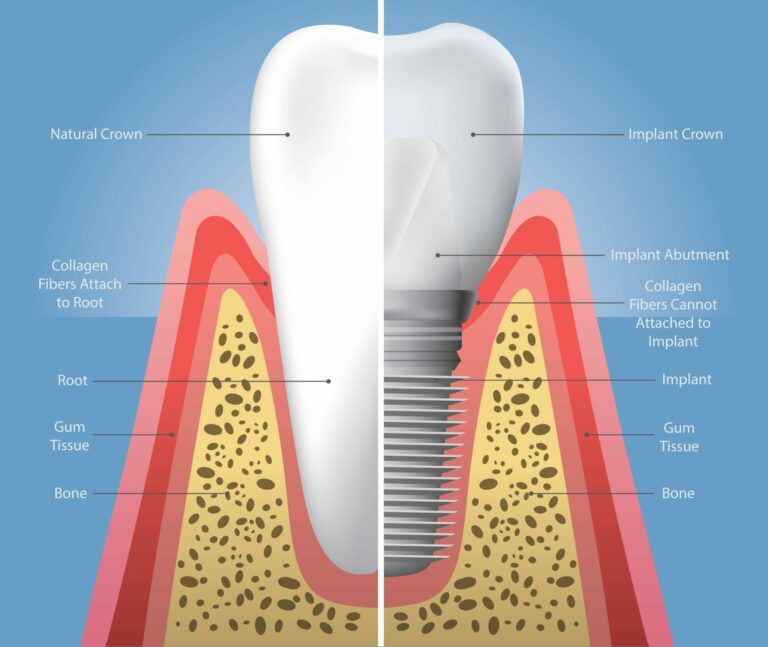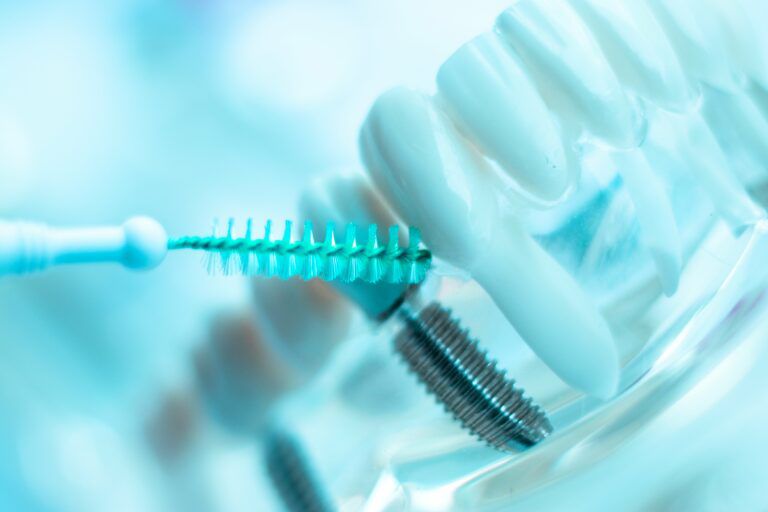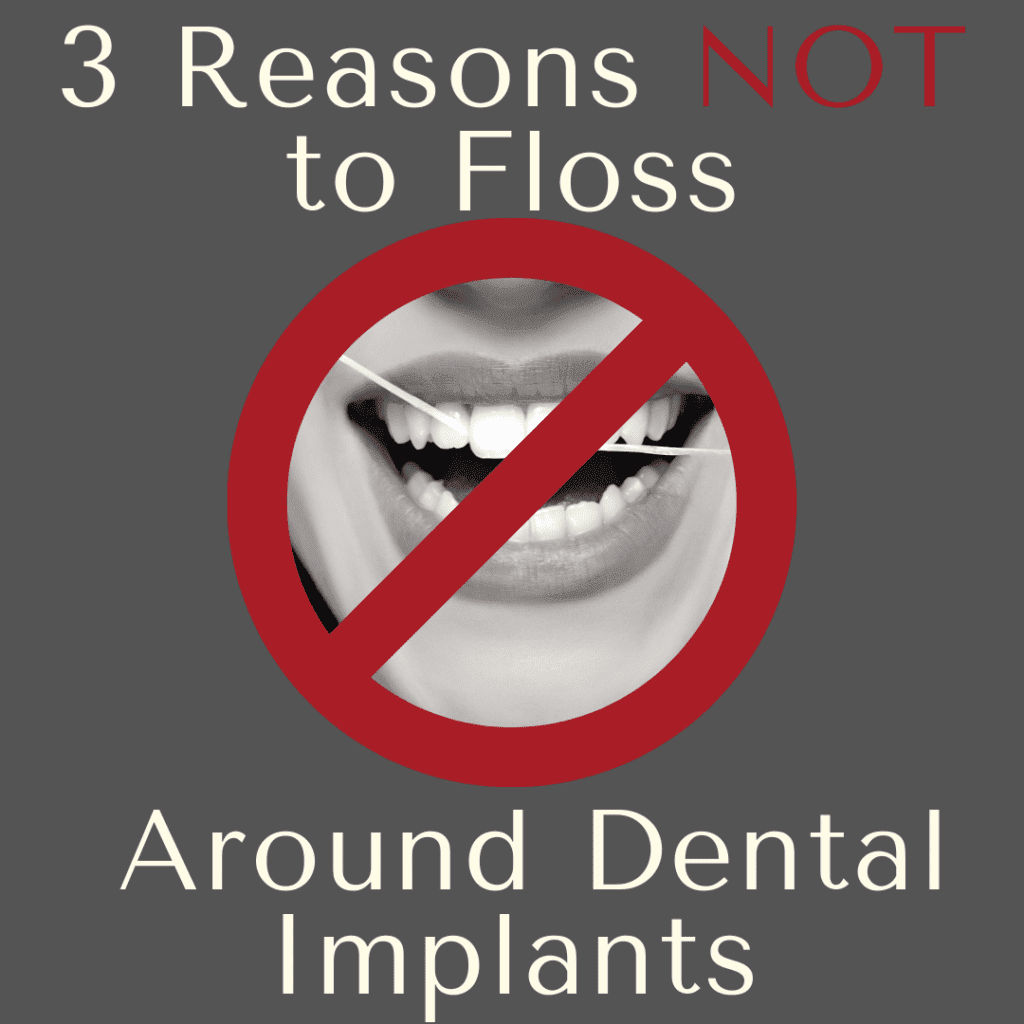During every dental appointment for as long as you can possibly remember, you have probably been told the importance of brushing and flossing. Anytime your dentist found a cavity or swollen gums, they likely told you that you need to brush and floss more. For as long as you have had natural teeth you’ve always brushed and flossed, so after getting dental implants it is only natural that you would expect it to continue this behavior, especially since dental implants are the closest thing to natural teeth themselves.
While it is certainly true that dental implants are extremely similar to natural teeth and do require regular oral hygiene, your routine may vary slightly from what you are used to. Yes, you still need to brush your implants like you would natural teeth. However, your flossing routine may look drastically different. This is because some dental professionals recommend against flossing around dental implants for these three reasons:
It Can Lead to Infection

The whole point of flossing is to remove excess bacteria from the mouth in order to prevent gum disease. However, traditional dental floss has been associated with causing infections such as peri-implantitis, which can then cause dental implant failure. This is because dental floss is susceptible to shredding, especially when used around a dental implant. When dental floss shreds, it leaves behind particles or pieces that can become trapped between the implants and gum tissue, causing an infection. If caught early, this can usually be treated; however in severe cases, the implant may need to be replaced.
Can Cause Bone Loss
Another unfortunate risk of traditional dental floss is that it has the possibility to cause bone loss. This can occur when the protective barrier surrounding the implant is broken by an aggressive flossing technique. In natural teeth, the periodontal ligament acts as the protective barrier between the gum tissue and underlying bone. However, since periodontal ligaments are removed to place dental implants, the barrier surrounding the implants is much thinner and more susceptible to damage. If this barrier becomes broken, it allows bacteria to invade the bone tissue, which can eventually lead to bone loss and implant failure.
Lack of Effectiveness
Besides the fact that dental floss is potentially damaging to dental implants, it is also not recommended due to its lack of effectiveness. While dental floss works well to remove plaque and food debris from between natural teeth, it does not always work as well for dental implants. This is because dental implants are available in different sizes and shapes, as well as being placed at different depths. All of these factors ultimately mean that the spacing between dental implants and other implants or natural teeth, can vary. Since dental floss is primarily designed to move between tight spaces, this suggests that floss may not be the best tool to remove plaque and food debris from wider spaces between implants.
If Not Floss, then What?

At this point you are probably wondering if you’re not allowed to use dental floss, better what should you use to clean between your dental implants? First and foremost, if your dentist recommends using dental floss, then it is advised to follow their recommendations since they know more information about your individual case. With that being said, here are some other alternatives to using traditional dental floss:
Interdental Brushes
Interdental brushes are tiny cone-shaped or round brushes attached by a thin wire to a handle. They are available in several different sizes, blanks, and sheets so that you can find the perfect interdental brush for your smile. They are used similar to Foss, in that they are placed between the teeth and then moved either up and down or side-to-side to remove plaque and food debris. Unlike Foss, however, they do not break, shred, or leave debris behind. This makes them ideal for cleaning between implants because they are effective and do not lead to infection.
Water Flosser
Water flossers, also known as oral irrigation systems, are also recommended as a substitute for traditional dental floss. Instead of using physical flaws, water flossers use a stream of pulsating water which acts as the floss. This stream of water is used between the teeth and along the gum line to remove plaque and food debris. Like the interdental brushes, water flossers do not leave any residue behind to cause infection. They are also easy to use and are effective in removing plaque from around the implant.




